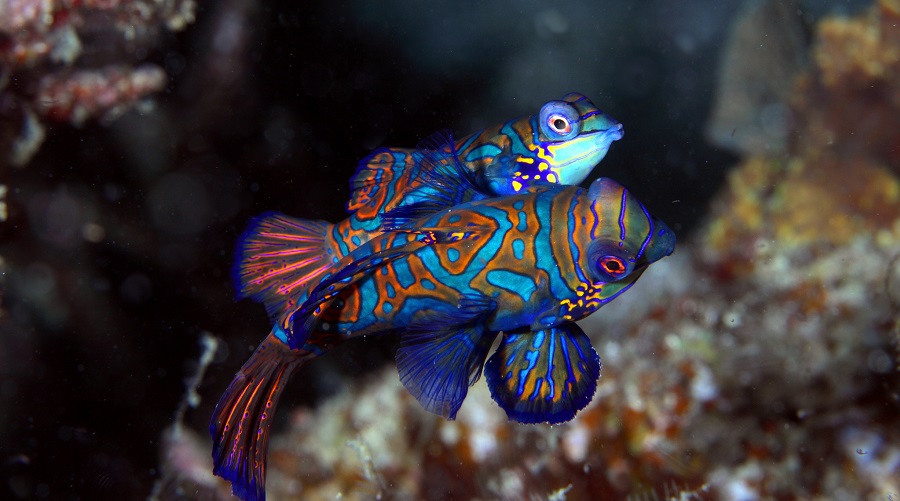
Mandarin fish mating. Image by Klaus Stiefel, Flickr.
Discounting anthropogenic-induced changes, the seasonally oscillating environments where long-lived fish hatch and grow remain more or less the same throughout the course of their lives. This means that the common explanation that states that fish become sexually active – or spawn for the first time – after experiencing certain environmental stimuli does not properly explain this phenomenon.
In a new article published in the Journal of Fish Biology, Daniel Pauly, principal investigator of the Sea Around Us initiative at UBC’s Institute for the Oceans and Fisheries, challenges previous hypotheses that attempted to explain why fish reach first maturity when they do and proposes an alternative explanation.
“Textbooks usually attempt to answer the question of why fish spawn when they do by describing a process supposedly triggered by environmental ‘stimuli’ experienced at the onset of the spawning season, passed on to the hypothalamus, and thence to a hormonal cascade,” Pauly said. “This explanation assumes that the process of perceiving the environmental stimuli is self-starting; however, it cannot be because the same environment was always there and they didn’t spawn earlier.”
Some long-lived fish, for example white sturgeon and orange roughy, can spend nearly 30 years without reaching first maturity, which means that after decades of not noticing the environmental cues around them, they suddenly do.
“What I think really makes fish spawn for the first time is the increasing oxygen stress that growing fish experience,” Pauly said. “This hypothesis is based on the Gill Oxygen Limitation Theory (GOLT), which explains that the tension between the growth of fish’s gill surface area – which limits the supply of oxygen to a fish’s body – and the growth of that body – which generates the oxygen demand – is what triggers a hormonal cascade that leads to gonad maturation and spawning.”
Gills are surfaces through which water must flow – a bit like the wind through blinds. Gill surface area grows in two dimensions, that is, in length and width, but they cannot keep up with bodies that grow in three dimensions, length, width and also depth. Thus, as fish get bigger, they have less gill surface area and their gills provide less oxygen per unit volume or weight.
“There is a point when their growth in weight leads to a decline in relative gill surface area and reaches a critical level of oxygen supply. This ‘tells’ the fish that it has reached a stage where it should mature and spawn when environmental conditions are adequate, that is, to act on certain environmental stimuli for spawning,” Pauly said.
Once a fish spawns, it loses gonadal tissue that previously had to be supplied with oxygen and, thus, its relative gill area increases, which facilitates renewed growth until the next spawning season, when the respiratory stress reappears.
Knowing how and when fish attain sexual maturity, the time and place of spawning and the duration of the cycle from the beginning of the development of the ovary to the final release of eggs is key information that can help fisheries managers estimate the size of a stock and its reproductive potential. Such knowledge is also useful to those farming fish, who generally want to avoid creating in their ponds the stressful conditions that promote fish reproduction.
The paper “Why do fish reach first maturity when they do?” Was published in the Journal of Fish Biology https://doi.org/10.1111/jfb.14902


